Kokopelli – Popular Trickster God Of The American Southwest Brought Happiness To People
Ellen Lloyd - AncientPages.com - There is something special and fascinating about Kokopelli, the Native American trickster god. Known under various names among several Native American tribes and sometimes nicknamed "Casanova of the Cliff Dwellers," his popularity seems timeless.
Playing on his magical flute, we encounter many petroglyphs and rock carvings of Kokopelli throughout the American Southwest.
Some of these rock carvings paintings are estimated to be 3,000 years old, and this clearly shows people kept the memory of Kokopelli alive, generation after generation.
Left: Kokoppeli in modern art. Credit Public Domain - Middle: Kokopelli petroglyph located on land near Embudo, New Mexico. Credit: Public Domain. Right: Kokopelli in front of a Camp Verde, Arizona coffee shop. Credit: Public Domain
There are many stories about Kokopelli, who was not only a trickster god. Kokopelli is also remembered as a fertility god, healer, and wonderful storyteller. His humpback was a bundle where he carried sacred objects, seeds, and songs.
Kokopelli was a source of happiness and joy. Kokopelli would visit villages, playing his flute, and people would sing and dance all night.
Kokopelli's Flute Playing - A Symbol Of The Transition Of Winter To Spring
Perhaps the most perplexing part of Kokopelli's visit is what happened afterward. As soon as Kokopelli left the village in the morning, the crops grew, and many women suddenly became pregnant. So, it's no wonder he was nicknamed "Casanova of the Cliff Dwellers."
His flute was of great importance to Native Americans. When he played on his flute, the snow melted, grass grew, and birds began to sing. In many myths and legends, it is therefore said that this fascinating fertility god was responsible for the end of winter and the coming of spring.
Kokopelli Was And Still Is Worshipped By Many Native American Tribes
Kokopelli was significant to the ancient Anasazi, also known as the Ancient Ones. The Anasazi occupied the valleys and plains in North America's "Four Corners" region (where Utah, Colorado, Arizona, and New Mexico meet at the corners).
Petroglyph of Kokopelli in the "Rio Grande Style" of the ancestral Pueblo culture after the year 1300 AD; taken at Mortendad Cave near Los Alamos, NM. Credit: Larry Lamsa - Flickr - CC BY 2.0
The Hopi were also familiar with Kokopelli, mentioned in their emergence and migration account. According to the Hopi legend, when their people emerged into the Fourth World (our current world), they encountered an eagle that shot an arrow into insects that carried the power of heat. These insects, known as máhus were not seriously harmed because their bodies healed as soon as they started to play on their flute. The two máhus accompanied the Hopi on their migration.
One of these insects was called Kókopilau (kóko meaning "wood" and pilau meaning "hump") because he looked like wood. He played on his flute and carried a bag of seeds that he had scarred across the lands. The astounding music of his flute made the roots grow.
The Hopi myth can also explain why many depictions of Kokopelli make him very insect-like in appearance.
Kokopelli – A Popular Native American God Who Made People Happy
The origin of Kokopelli's name is not entirely clear, but it may have been derived from the Zuni name for god ("Koko") and the Indian name for the Desert Robber Fly ("pelli"). Some scholars trace the origin of Kokopelli to ancient Aztec traders known as pochtecas, who were professional, long-distance traveling merchants in the Aztec Empire. They used to carry their goods in sacks slung across their backs, and this sack may have evolved into Kokopelli's familiar hump.
Kokopelli and Kokopelli Mana as depicted by the Hopi - Credit: Jesse Walter Fewkes, Hopi katcinas drawn by native artists, 1903. Public Domain
Kokopelli also had a female counterpart known as "Kokopelli Mana." Kokopelli was a charismatic, playful, intelligent god who, according to some tribes, was also a spiritual priest with actual healing powers. To the Zuni Indians, he was a rain priest, and the Navajo believed he was the god of the harvest. He was also regarded as representing the spirit of music.
Legends about Kokopelli vary, and he was assigned many different roles and responsibilities. y ed. Kokopelli seemed to bring out the "good" in everyone, which could be one of the reasons this Native American god has captured the imagination and hearts of so many people. We know with certainty that Kokopelli is still worshipped among many Native American tribes, and his popularity has never ended.
Today, one can encounter images of Kokopelli not only on ancient rock carvings but also on T-shirts, ball caps, and key chains.
See also: Lyman Lake Petroglyphs And Famous Kokopelli-Flute Player Left By Ancestors Of The Hopi Indians
Due to his popularity, Kokopelli has been adopted as a broader symbol of the Southwestern United States.
Updated on March 28, 2024
Written by - Ellen Lloyd – AncientPages.com
Copyright © AncientPages.com. All rights reserved. This material may not be published, broadcast, rewritten or redistributed in whole or part without the express written permission of AncientPages.com
Expand for references
More From Ancient Pages
-
 On This Day In History: Leon Trotsky Was Assassinated – On August 20, 1940
News | Aug 20, 2016
On This Day In History: Leon Trotsky Was Assassinated – On August 20, 1940
News | Aug 20, 2016 -
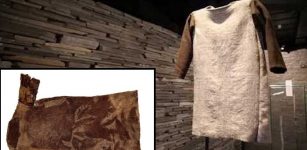 Reconstructed – Incredibly Well-Preserved 1,700-Year-Old Lendbreen Tunic – Norway’s Oldest Piece Of Clothing
Archaeology | Feb 21, 2018
Reconstructed – Incredibly Well-Preserved 1,700-Year-Old Lendbreen Tunic – Norway’s Oldest Piece Of Clothing
Archaeology | Feb 21, 2018 -
 Earliest Systematic Coal Exploitation For Fuel Goes Back To ~3600 B.P.
Archaeoastronomy | Aug 2, 2023
Earliest Systematic Coal Exploitation For Fuel Goes Back To ~3600 B.P.
Archaeoastronomy | Aug 2, 2023 -
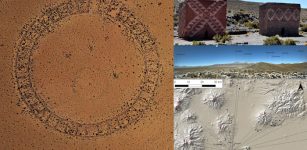 Mysterious Ancient Andean Waskiri Structure Built For Unknown Purpose Investigated By Scientists
Archaeology | Apr 14, 2023
Mysterious Ancient Andean Waskiri Structure Built For Unknown Purpose Investigated By Scientists
Archaeology | Apr 14, 2023 -
 Rare Ancient Underwater Maya Ruins And Salt Kitchens Discovered
Archaeology | Oct 13, 2022
Rare Ancient Underwater Maya Ruins And Salt Kitchens Discovered
Archaeology | Oct 13, 2022 -
 Scientists Suggest Neanderthals And Modern Humans Should Be Classified As Separate Species
Evolution | Dec 6, 2024
Scientists Suggest Neanderthals And Modern Humans Should Be Classified As Separate Species
Evolution | Dec 6, 2024 -
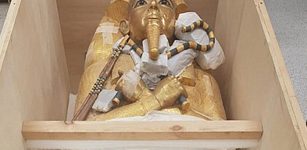 King Tutankhamun’s Large Golden Coffin Was Moved For Restoration
Archaeology | Jul 18, 2019
King Tutankhamun’s Large Golden Coffin Was Moved For Restoration
Archaeology | Jul 18, 2019 -
 Did First Settlers From Asia Reached America By ‘Stepping Stone’ Migration Across Bering Sea?
Archaeology | Apr 30, 2021
Did First Settlers From Asia Reached America By ‘Stepping Stone’ Migration Across Bering Sea?
Archaeology | Apr 30, 2021 -
 Unexpected Substance Found In Ancient Maya City May Have Arrived Through Distant Trade
Archaeology | Dec 2, 2024
Unexpected Substance Found In Ancient Maya City May Have Arrived Through Distant Trade
Archaeology | Dec 2, 2024 -
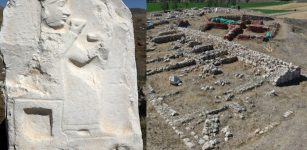 Ancient Hittite Temple Dedicated To The Goddess Of Night To Be Unearthed
Archaeology | Oct 2, 2021
Ancient Hittite Temple Dedicated To The Goddess Of Night To Be Unearthed
Archaeology | Oct 2, 2021 -
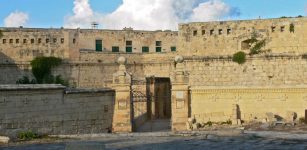 On This Day In History: Maltese Rebellion Took Place – On Sep 8, 1775
News | Sep 8, 2016
On This Day In History: Maltese Rebellion Took Place – On Sep 8, 1775
News | Sep 8, 2016 -
 On This Day In History: Astronomer Johannes Kepler Observes Supernova – On Oct 17, 1604
News | Oct 17, 2016
On This Day In History: Astronomer Johannes Kepler Observes Supernova – On Oct 17, 1604
News | Oct 17, 2016 -
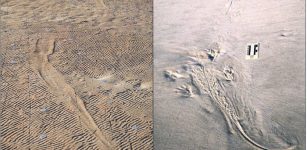 Ancient Giant Amphibians Swam Like Crocodiles 250 Million Years Ago – New Study
Archaeology | Mar 31, 2023
Ancient Giant Amphibians Swam Like Crocodiles 250 Million Years Ago – New Study
Archaeology | Mar 31, 2023 -
 Is The Puzzling Miami Circle Much Older Than Previously Thought?
Featured Stories | Mar 14, 2021
Is The Puzzling Miami Circle Much Older Than Previously Thought?
Featured Stories | Mar 14, 2021 -
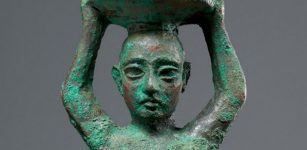 Divine Shulgi Of Ur: Influential, Long-Ruling King, Conqueror And Native Akkadian Speaker In Five Languages
Civilizations | Mar 22, 2019
Divine Shulgi Of Ur: Influential, Long-Ruling King, Conqueror And Native Akkadian Speaker In Five Languages
Civilizations | Mar 22, 2019 -
 Ancient Temple At Taposiris Magna In Alexandria, Egypt, Reveals Some Of Its Secrets
Archaeology | Dec 18, 2024
Ancient Temple At Taposiris Magna In Alexandria, Egypt, Reveals Some Of Its Secrets
Archaeology | Dec 18, 2024 -
 Ancient Mystery Of Italy’s Long-Lost Civilization That Pre-Dates The Ancient Roman Empire And Other Great Old Cultures
Ancient Mysteries | Mar 29, 2019
Ancient Mystery Of Italy’s Long-Lost Civilization That Pre-Dates The Ancient Roman Empire And Other Great Old Cultures
Ancient Mysteries | Mar 29, 2019 -
 Mystery Of Count St. Germain – He Claimed To Have Lived For Several Centuries
Ancient Mysteries | Sep 4, 2014
Mystery Of Count St. Germain – He Claimed To Have Lived For Several Centuries
Ancient Mysteries | Sep 4, 2014 -
 The Hittites, Mysterious People Of A Thousand Gods – Collapse Of The Hittite Empire
News | Sep 9, 2015
The Hittites, Mysterious People Of A Thousand Gods – Collapse Of The Hittite Empire
News | Sep 9, 2015 -
 Major Discovery Of 15,000-Year-Old Artifacts Could Re-Write History Of Peru
Archaeology | May 26, 2017
Major Discovery Of 15,000-Year-Old Artifacts Could Re-Write History Of Peru
Archaeology | May 26, 2017



